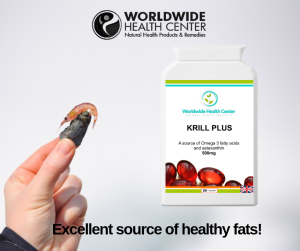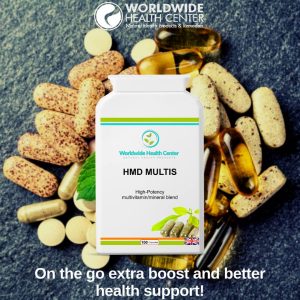Need help? Email us:
- AMINO ACIDS
- Antioxidants
- Blood Sugar Regulation
- Bone and Joint Repair
- BOOKS
- Brain Food & Energy Supplements
- Candida Support
- Cardiovascular Support
- Cholesterol
- Constipation Relief
- Dental Health
- Detox
- Digestive Support
- Eye Support
- Fatty Acids
- Gut Health
- Hair Mineral Analysis
- Heavy Metal Detox
- Herbal Tinctures
- Immune Support
- Liver Support
- METABOLIC TYPING
- Multivitamin & Mineral
- Natural antimicrobials and parasite remedies
- Natural Diuretic
- Probiotics
- Prostate Health
- Tachyon Products
- Uncategorized
- VITAMINS
- WEIGHT LOSS
INTRODUCTION TO COENZYME Q10 – THE HEART ENERGIZER!

DEFINITION
Coenzyme Q10 (CoQ 10) or ubiquinone is essentially a vitamin or vitamin-like substance. Disagreements on nomenclature notwithstanding, vitamins are defined as organic compounds essential in minute amounts for normal body function acting as coenzymes or precursors to coenzymes. They are present naturally in foods and sometimes are also synthesized in the body.
CoQ10 likewise is found in small amounts in a wide variety of foods and is synthesized in all tissues. The biosynthesis of CoQ10 from the amino acid tyrosine is a multistage process requiring at least eight vitamins and several trace elements. Coenzymes are cofactors upon which the comparatively large and complex enzymes absolutely depend for their function. Coenzyme Q10 is the coenzyme for at least three mitochondrial enzymes (complexes I, II and III) as well as enzymes in other parts of the cell. Mitochondrial enzymes of the oxidative phosphorylation pathway are essential for the production of the high-energy phosphate, adenosine triphosphate (ATP), upon which all cellular functions depend. The electron and proton transfer functions of the quinone ring are of fundamental importance to all life forms; ubiquinone in the mitochondria of animals, plastoquinone in the chloroplast of plants, and menaquinone in bacteria. The term “bioenergetics” has been used to describe the field of biochemistry looking specifically at cellular energy production. In the related field of free radical chemistry, CoQ10 has been studied in its reduced form as a potent antioxidant.
COENZYME Q10 DEFICIENCY
Normal blood and tissue levels of CoQ10 have been well established by numerous investigators around the world. Significantly decreased levels of CoQ10 have been noted in a wide variety of diseases in both animal and human studies.
CoQ10 deficiency may be caused by insufficient dietary CoQ10, impairment in CoQ10 biosynthesis, excessive utilization of CoQ10 by the body, or any combination of the three. Decreased dietary intake is presumed in chronic malnutrition and cachexia.
HMG-CoA reductase inhibitors used to treat elevated blood cholesterol levels by blocking cholesterol biosynthesis also block CoQ10 biosynthesis. The resulting lowering of blood CoQ10 level is due to the partially shared biosynthetic pathway of CoQ10 and cholesterol. In patients with heart failure this is more than a laboratory observation. It has a significant harmful effect which can be negated by oral CoQ10 supplementation.
Increased body consumption of CoQ10 is the presumed cause of low blood CoQ10 levels seen in excessive exertion, hypermetabolism, and acute shock states. It is likely that all three mechanisms (insufficient dietary CoQ10, impaired CoQ10 biosynthesis, and excessive utilization of CoQ10) are operable to varying degrees in most cases of observed CoQ10 deficiency.
TREATMENT OF HEART DISEASE WITH COENZYME Q10
CoQ10 is known to be highly concentrated in heart muscle cells due to the high energy requirements of this cell type. For the past 14 years, the great bulk of clinical work with CoQ10 has focused on heart disease. Specifically, congestive heart failure (from a wide variety of causes) has been strongly correlated with significantly low blood and tissue levels of CoQ10. The severity of heart failure correlates with the severity of CoQ10 deficiency. This CoQ10 deficiency may well be a primary etiologic factor in some types of heart muscle dysfunction while in others it may be a secondary phenomenon. Whether primary, secondary or both, this deficiency of CoQ10 appears to be a major treatable factor in the otherwise inexorable progression of heart failure.
Pioneering trials of CoQ10 in heart failure involved primarily patients with dilated weak heart muscle of unknown cause (idiopathic dilated cardiomyopathy). CoQ10 was added to standard treatments for heart failure such as fluid pills (diuretics), digitalis preparations (Lanoxin), and ACE inhibitors. Several trials involved the comparison between supplemental CoQ10 and placebo on heart function as measured by echocardiography. CoQ10 was given orally in divided doses as a dry tablet chewed with a fat containing food or an oil based gel cap swallowed at mealtime. Heart function, as indicated by the fraction of blood pumped out of the heart with each beat (the ejection fraction), showed a gradual and sustained improvement in tempo with a gradual and sustained improvement in patients’ symptoms of fatigue, dyspnea, chest pain, and palpitations. The degree of improvement was occasionally dramatic with some patients developing a normal heart size and function on CoQ10 alone. Most of these dramatic cases were patients who began CoQ10 shortly after the onset of congestive heart failure. Patients with more established disease frequently showed clear improvement but not a return to normal heart size and function.
Internationally, there have been at least nine placebo controlled studies on the treatment of heart disease with CoQ10: two in Japan, two in the United States, two in Italy, two in Germany, and one in Sweden. All nine of these studies have confirmed the effectiveness of CoQ10 as well as its remarkable safety. There have now been eight international symposia on the biomedical and clinical aspects of CoQ10 (from 1976 through 1993). These eight symposia comprised over 300 papers presented by approximately 200 different physicians and scientists from 18 different countries. The majority of these scientific papers were Japanese (34%), with American (26%), Italian (20%) and the remaining 20% from Sweden, Denmark, Germany, United Kingdom, Belgium, Australia, Austria, France, India, Korea, Netherlands, Poland, Switzerland, USSR, and Finland. The majority of the clinical studies concerned the treatment of heart disease and were remarkably consistent in their conclusions: that treatment with CoQ10 significantly improved heart muscle function while producing no adverse effects or drug interactions.
The efficacy and safety of CoQ10 in the treatment of congestive heart failure, whether related to primary cardiomyopathies or secondary forms of heart failure, appears to be well established. The largest study to date is the Italian multicenter trial, by Baggio et al., involving 2664 patients with heart failure.
The most recent work in heart failure examined the effect of CoQ10 on diastolic dysfunction, one of the earliest identifiable signs of myocardial failure that is often found in mitral valve prolapse, hypertensive heart disease and certain fatigue syndromes. Diastolic dysfunction might be considered the common denominator and a basic cause of symptoms in these three diagnostic groups of disease. Diastole is the filling phase of the cardiac cycle. Diastolic function has a larger cellular energy requirement than the systolic contraction and, therefore, the process of diastolic relaxation is more highly energy dependent and thus more highly dependent on CoQ10. In simplier terms, it takes more energy to fill the heart than to empty it. Diastolic dysfunction is a stiffening’ of the heart muscle which interferes with the heart’s ability to function as an effective pump. It is seen early in the course of many common cardiac disorders and is demonstrable by echocardiography. This stiffening returns towards normal with supplemental CoQ10 in tempo with clinical improvement.
HYPERTENSION
High blood pressure is a major factor in the development of coronary heart disease and stroke and so reducing it to normal levels is the prime concern in high risk cardiac patients. There are numerous drugs to counteract elevated cardiac blood pressure but like all powerful medicines, they can produce unwanted side-effects. Coenzyme Q10 has now been found to complement the action of these drugs in such a way that their dosage can be reduced without compromising their benefits. At the same time, adverse reactions are also reduced. Indeed, in some clinical trials, coenzyme Q10 alone has had a desirable effect on high blood pressure After only two months’ therapy, the coenzyme reduced systolic blood pressures from 141 to 126mm mercury and diastolic blood pressures from 97 to 90 mm mercury. No side-effects of coenzyme Q10 therapy were encountered.
It is important to note that in all of the above clinical trials, CoQ10 was used in addition to traditional medical treatments, not to their exclusion. In one study by Langsjoen et al, of 109 patients with essential hypertension, 51% were able to stop between one and three antihypertensive drugs at an average of 4.4 months after starting CoQ10 treatment while the overall New York Heart Association (NYHA) functional class improved significantly from a mean of 2.40 to 1.36. Hypertension is reduced when diastolic function improves. In another study, there was a gradual and sustained decrease in dosage or discontinuation of concomitant cardiovascular drug therapy: Of 424 patients with cardiovascular disease, 43% were able to stop between one and three cardiovascular drugs with CoQ10 therapy. The authors conclude that the vitamin-like substance, CoQ10, “. . . may be ushering in the new era of cellular/biochemical treatment of disease, complementing and extending the systems-oriented, macro and microscopic approach that has served us well to this point”.
The highest concentration of coenzyme Q10 in the human body is found in the muscle cells of the heart, so not surprisingly it has been found to benefit those with failing hearts. Simple oral supplementation with the coenzyme caused an increased vigour in failing cardiac systems with significantly better heart efficiency, cardiac output and stroke volumes. In a similar manner, individuals suffering from angina pectoris found benefit after taking the substance orally. They noticed that they could tolerate exercise much better whilst on the therapy and the incidence of the stabbing pains that are a feature of the condition decreased dramatically.
Coenzyme Q10 does not replace lifesaving heart drugs but it does complement their action. Doctors have found that the addition of coenzyme Q10 supplements allowed them to reduce the drug dosages in their patients without losing any of the desirable therapeutic results. A reduction in drug dosage meant that the chances of adverse reactions due to these drugs were decreased and, in many cases, did not materialise at all.
PERIODONTAL DISEASE
Periodontal disease, which affects the tissues that support the teeth, including the gums, accounts for more lost teeth in adulthood than any other dental problem. This condition can cause facial disfigurement, pain, an inability to eat leading to malnutrition and the anti-social stigma of profound halitosis. Up to 9 out of 10 adults in the West will suffer some form of periodontal disease in their later lives and as a result 1 in 4 of them will lose all their teeth before the age of 60.
A constant feature of periodontal disease is a deficiency of coenzyme Q10 in the gum tissue cells. This finding led many researchers to study what would happen if coenzyme 010 were given to restore gum levels to normal. The results were quite enlightening in that most of those treated responded dramatically to the therapy combined with regular periodontal care.
These promising results prompted a U.S. Army dentist, Dr E.G. Wilkinson, to confirm that his patients’ diseased gums were indeed deficient in coenzyme Q10. In a double-blind controlled clinical trial (i.e. neither doctor nor patients knew whether they were receiving the coenzyme or a non-active placebo) involving more than 120 patients, Dr Wilkinson confirmed the beneficial effect of the coenzyme. Not only was the progress of the disease stopped, but the rate of healing of the gum tissue was accelerated after coenzyme Q10 treatment. Many other trials in the USA and Japan have confirmed these findings.
WEIGHT CONTROL
The tendency to be overweight may be the result of a metabolism that results in decreased caloric output. Since coenzyme Q10 is an essential factor for energy production, it is reasonable to assume that a deficiency of coenzyme Q10 is a contributing factor in many cases of obesity.
In one study, 52% of morbidly obese patients were found to be deficient in coenzyme Q10. In patients low in coenzyme Q10, supplementation resulted in a doubling of the rate of weight loss on a low calorie diet as compared with obese patients on the same diet who did not receive coenzyme 010. The effect is most likely due to an increase in cellular respiration and caloric output.
MUSCULAR DYSTROPHY
Coenzyme Q10 deficiency has been found in the muscle mitochondria of humans with muscular dystrophy. In human subjects treated with 100mg of coenzyme 010, 50% showed significant improvements in increased exercise tolerance, reduced leg pain, better control of leg function, and less fatigue. Certainly, coenzyme Q10 is an important advance in the treatment of such muscle diseases.
DOSEAGE
The initial therapeutic starting dose for clinical applications is 60 mg daily, which usually works out at two 30 mg capsules daily. In severe cardiac disease and muscular dystrophy, larger amounts such as 100mg/day or more might be required for at least 8 weeks or longer.
SAFETY
Basically, CoQ10 is well tolerated and no serious adverse effects have been reported with long term use. In a study for side effects, less than 1% of more than 5,000 patients reported any problem. The problems that were reported included gastric discomfort, loss of appetite, nausea and, rarely, some diarrhoea.
God bless!
Dr. George J. Georgiou, Ph.D.
Clinical Nutritionist-Master Herbalist-Naturopath-Homeopath Acupuncturist-Iridologist-Clinical Sexologist-Clinical Psychologist
[email protected]
The Food and Drug Administration have not evaluated these statements. This information and products are not intended to diagnose, treat, cure or prevent any disease. For all serious health problems, consult a qualified health professional.
Important Links

Dr. George J. Georgiou
Dr. George J. Georgiou, Ph.D., N.D., D.Sc (AM), M.Sc., B.Sc, is a world-renowned expert in the field of holistic medicine and detoxification. As the inventor of the highly acclaimed Dr. Georgiou's Heavy Metal Detox Protocol, and the main product, HMD™ (Heavy Metal Detox), he has revolutionized the approach to natural heavy metal detoxification. With over 35 years of experience in natural medicine, he has authored 23 books, including the comprehensive guide 'Curing the Incurable with Holistic Medicine,' which offers invaluable insights and over 700 scientific references. Dr. Georgiou's groundbreaking work is sought after by individuals and practitioners worldwide through his Da Vinci Institute of Holistic Medicine and Da Vinci Holistic Health Center based in Larnaca, Cyprus.









